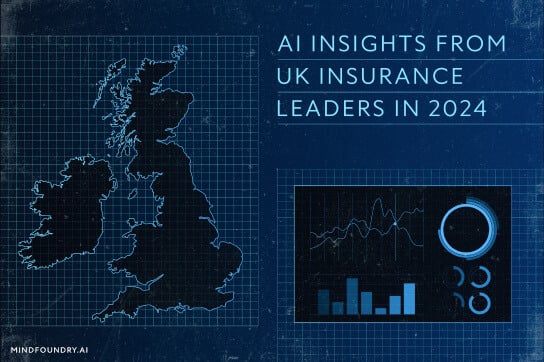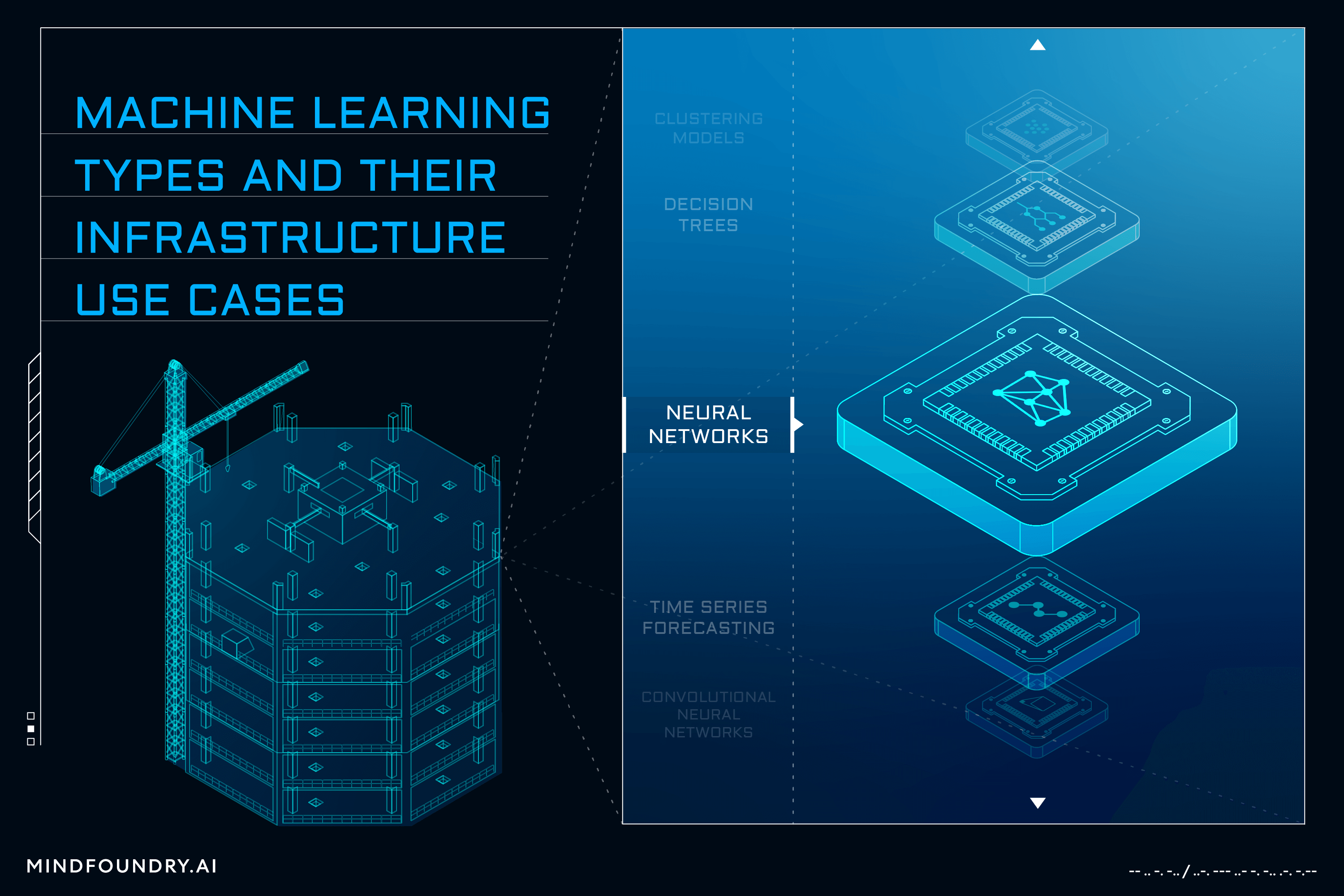Insuring Against AI Risk: An interview with Mike Osborne
When used by malicious actors or without considerations for transparency and responsibility, AI poses significant risks. Mind Foundry is working with...

2024 has been a significant year for AI in insurance. New products and technologies are being developed and deployed, but regulations like the Consumer Duty are becoming clearer and more impactful. At 2024’s Insurance Post AI Summit, Mind Foundry conducted a series of workshops with insurance leaders representing some of the top UK insurers to understand their strategies, successes, and challenges in building, deploying, and scaling AI within their business. We took the insights from these workshops and turned them into a comprehensive report called AI Insights Unveiled: UK Insurance Leaders Navigate the 2024 Regulatory Maze.
We have summarised some of the key talking points and takeaways in the following piece. The full report, with all insights, testimonies, and statistics, can be found here.
Key Obstacles to Overcome in Insurance
The insurance sector is beginning to implement AI solutions across various use cases, including claims, fraud, pricing, and more. However, many organisations are still in the early stages of exploration and having difficulty progressing towards more impactful deployments.
We asked insurance leaders how far along in their AI journey they were, and the vast majority are either undergoing proof of concepts, have started developing, or have already deployed AI systems. Nevertheless, new challenges are now emerging around explainability, operating costs, governance and the pace at which insurers can get models into production.
The results of the surveys we conducted with participants, as well as conversational feedback throughout the day, highlighted five key themes:
These themes indicate some of the challenges around successful AI adoption in insurance. For more detailed and nuanced insight, we conducted a series of workshops throughout the day to understand the state of play around AI adoption in insurance and some of the risks and challenges that insurers face.
The survey also highlighted some particularly interesting statistics:
Differing Levels of AI Maturity in Insurance
Responses showed that despite AI’s evident potential and the impact it has already begun to show in insurance, many organisations are still only just beginning to explore this potential in a meaningful way. Most are at a low level of AI maturity, and relatively few have moved far beyond the pilot stage to having multiple performant models in production. There is also clearly no guarantee that a larger insurance organisation will be further along in their journey by default. Despite a clear eagerness to accelerate AI adoption, progress in insurance has been stubbornly slow.
 Read the full report to find out what each step on the AI maturity scale represents.
Read the full report to find out what each step on the AI maturity scale represents.
The reasons for this are numerous. Concern around the risks that AI could pose for an insurer, especially around regulatory compliance, was a significant factor, as was the internal concern within organisations that AI would have a dramatic impact on people’s jobs and the necessary training and upskilling that needed to take place for teams to be able to use it effectively. Furthermore, the inherent difficulty of growing a model portfolio and the time-consuming and resource-intensive nature of managing large numbers of models simultaneously is another challenge preventing many insurers from reaching higher levels of AI maturity.
Prioritising AI Investment and Measuring its Impact
To better understand how insurers invest in AI and their expected challenges for the future, we asked where they are prioritising their AI in the next 6 - 12 months. Results showed that investment in AI was concentrated in some areas more than others, specifically in pricing and claims. This suggests insurers understand AI well enough from a business perspective to know where it will likely have the greatest impact.
Nevertheless, despite a clear intention to continue investing in AI and an understanding of where it can create the greatest benefits, respondents indicated that they had experienced a high level of internal resistance when introducing AI. The lack of high-quality data is also cited as a challenge, and data preparation is one particular task that insurers are forced to spend a significant amount of time doing. None of the problems mentioned above are simple to resolve, but without urgency and prioritisation, scaling AI will continue to be overlooked until insurers become forced to implement company-wide AI strategies to remain competitive.

The Role of AI Governance in Insurance
Finally, we looked at how AI governance impacts organisations within the Insurance industry. Organisations of all sizes and maturity, as well as participants from different departments, agreed that “Explainability” was the most important feature of governance as a central component of instilling trust in AI systems, both internally and externally, and ensuring compliance in a heavily regulated industry.
Even so, responses to our survey suggested that insurers aren’t currently spending significant amounts of time managing and monitoring their models. However, this would seem to be more of a reflection on the relative immaturity of most organisations’ AI adoption, as not many of them are at the stage where these tasks become a priority. Nevertheless, as more insurers expand their model portfolios and as AI regulations continue to take shape, AI governance and effective model management will be fundamental, not just to business impact but also to regulatory compliance, trust, and confidence.
AI’s Undeniable Potential
Many insurers are already seeing the results of their efforts to scale AI in their business. Even so, for most insurers, the obstacles and risks surrounding the technology, coupled with regulatory pressure, internal hesitancy, and misalignment, seem to be proving prohibitive. These are obstacles that any insurer will need to overcome if they are to integrate AI systems that have a material and lasting impact on their business, and so the time to devise and implement strategies, begin upskilling and educating teams, and engage in partnerships with AI experts has arrived. Any insurer that fails to seize the moment will swiftly fall behind, and in an industry of such fierce competition, falling behind can lead to being left behind.
The full report, with all its insights, testimonies, and statistics, can be found here.

When used by malicious actors or without considerations for transparency and responsibility, AI poses significant risks. Mind Foundry is working with...

AI and Machine learning is a complex field with numerous models and varied techniques. Understanding these different types and the problems that each...

While the technical aspects of an AI system are important in Defence and National Security, understanding and addressing AI business considerations...